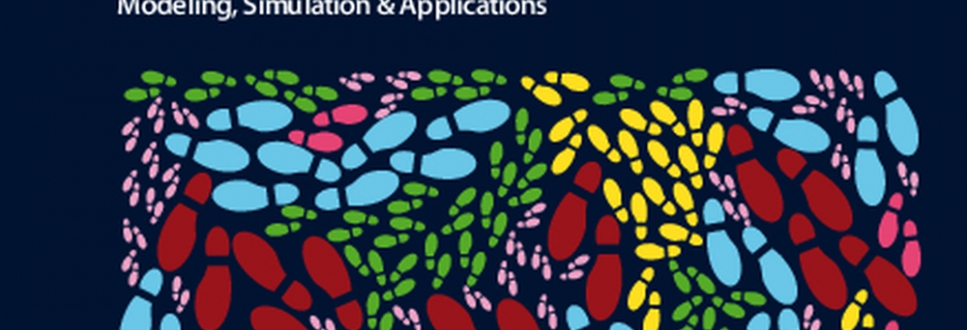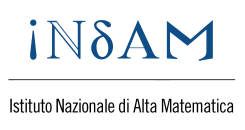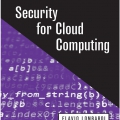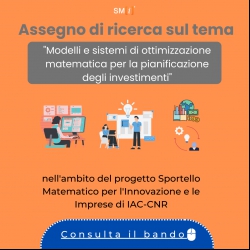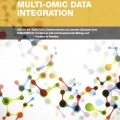
Multi-omic Data Integration
AUTORI: PAOLO TIERI,
Stable, predictive biomarkers and interpretable disease signatures are seen as a significant step towards personalized medicine. In this perspective, integration of multi-omic data coming from genomics, transcriptomics, glycomics, proteomics, metabolomics is a powerful strategy to reconstruct and analyse complex multi-dimensional interactions, enabling deeper mechanistic and medical insight. At the same time, there is a rising concern that much of such different omic data –although often publicly and freely available- lie in databases and repositories underutilised or not used at all. Issues coming from lack of standardisation and shared biological identities are also well-known. From these considerations, a novel, pressing request arises from the life sciences to design methodologies and approaches that allow for these data to be interpreted as a whole, i.e. as intertwined molecular signatures containing genes, proteins, mRNAs and miRNAs, able to capture inter-layers connections and complexity. This book collects papers discussing data integration approaches and methods of several types and extents, their application in understanding the pathogenesis of specific diseases or in identifying candidate biomarkers to exploit the full benefit of multi-omic datasets and their intrinsic information content.
Table of Contents
05 - Editorial: Multi-omic data integration
Christine Nardini, Jennifer Dent and Paolo Tieri
07 - Multi-omics analysis identifies genes mediating the extension of cell walls inthe Arabidopsis thaliana root elongation zone
Michael H. Wilson, Tara J. Holman, Iben Sørensen, Ester Cancho-Sanchez, DarrenM. Wells, Ranjan Swarup, J. Paul Knox, William G. T. Willats, Susana Ubeda-Tomás,Michael Holdsworth, Malcolm J. Bennett, Kris Vissenberg and T. Charlie Hodgman
19 - Comparative transcriptomics and metabolomics in a rhesus macaque drug administration study
Kevin J. Lee, Weiwei Yin, Dalia Arafat, Yan Tang, Karan Uppal, ViLinh Tran, MonicaCabrera-Mora, Stacey Lapp, Alberto Moreno, Esmeralda Meyer, Jeremy D. DeBarry,Suman Pakala, Vishal Nayak, Jessica C. Kissinger, Dean P. Jones, Mary Galinski,Mark P. Styczynski and Greg Gibson
38 - Multi-omic landscape of rheumatoid arthritis: re-evaluation of drug adverse effects
Paolo Tieri, XiaoYuan Zhou, Lisha Zhu and Christine Nardini
48 - From molecular signatures to predictive biomarkers: modeling disease pathophysiology and drug mechanism of action
Andreas Heinzel, Paul Perco, Gert Mayer, Rainer Oberbauer, Arno Lukas and Bernd Mayer
59 - How to build personalized multi-omics comorbidity profiles
Mohammad Ali Moni and Pietro Liò
78 - Fingerprints of a message: integrating positional information on thetranscriptome
Erik Dassi and Alessandro Quattrone
85 - Integrating multi-omic features exploiting Chromosome Conformation Capture data
Ivan Merelli, Fabio Tordini, Maurizio Drocco, Marco Aldinucci, Pietro Liò and Luciano Milanesi
96 - Computational modeling of heterogeneity and function of CD4+ T cells
Adria Carbo, Raquel Hontecillas, Tricity Andrew, Kristin Eden, Yongguo Mei, Stefan Hoops and Josep Bassaganya-Riera
107 - Understanding gene regulatory mechanisms by integrating ChIP-seq andRNA-seq data: statistical solutions to biological problems
Claudia Angelini and Valerio Costa
115 - Integrative workflows for metagenomic analysis
Efthymios Ladoukakis, Fragiskos N. Kolisis and Aristotelis A. Chatziioannou
126 - Integrative analysis of multiple diverse omics datasets by sparse group multitask regression
Dongdong Lin, Jigang Zhang, Jingyao Li, Hao He, Hong-Wen Deng andYu-Ping Wang



